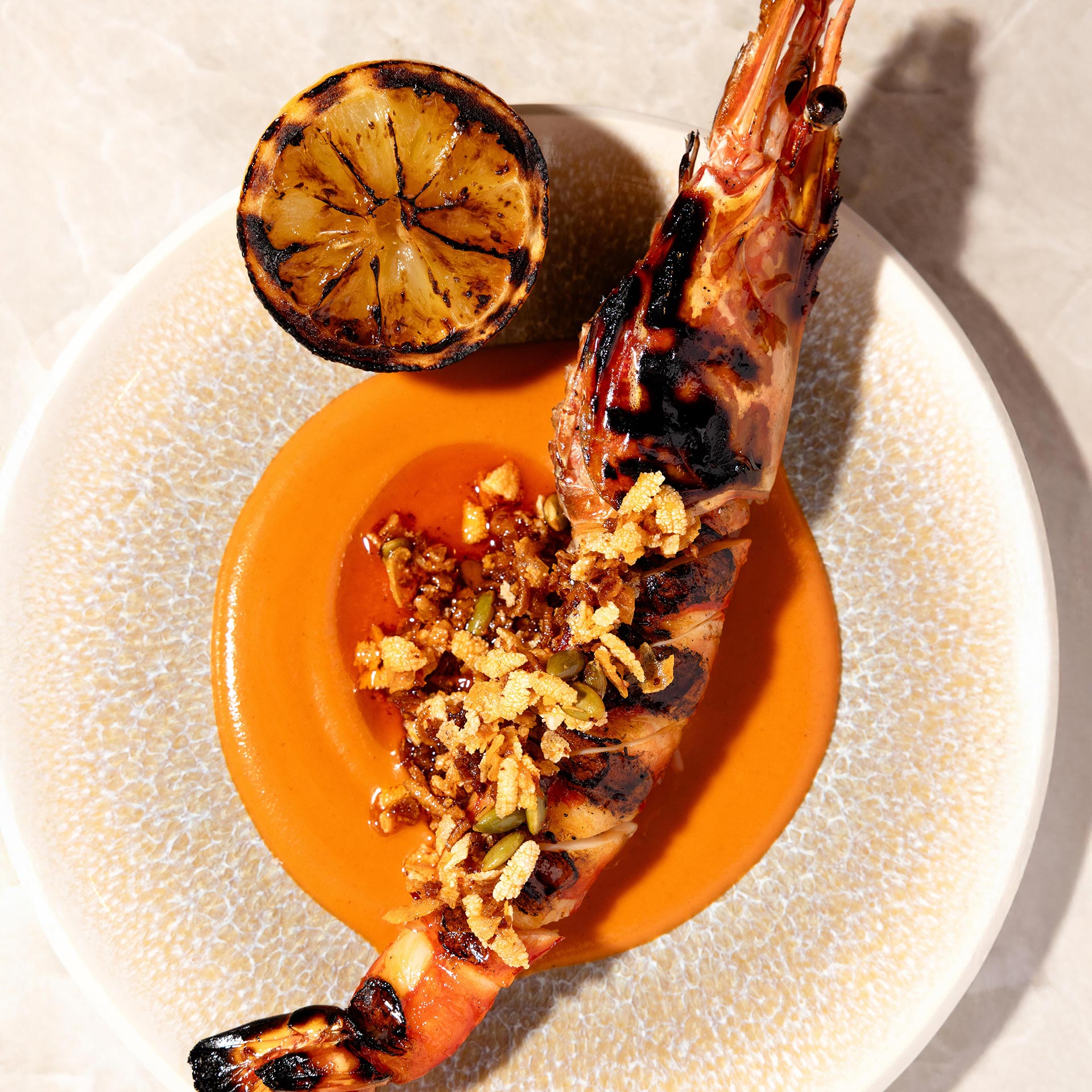
Ah Chun’s owner Wang Hong Chun comes from Tsingdao, Shandong. He picked up cooking at a vocational training school right after college graduation, spending 30 years working in the kitchens in his hometown and Hong Kong. Northern Chinese food is what he is excellent at and focuses solely on. Since it first came to being in 2011, the stars of the restaurant’s menu have always been dumplings and stir-fries true to the culinary traditions in Shandong.
Hong Kong diners might think of Shandong dumpling with not much enthusiasm. The perception of its thick skin, large size and strong taste of flour doesn’t really appeal to their palate used to the more delicate Cantonese food. Wang explained the cultural difference.
“Original Shandong dumpling should have thin skin and substantial filling. Contrary to Cantonese dumpling which is treated as a snack, ours forms an important part of a proper meal. Its skin gives us energy and the filling serves as the complementary dishes. We can eat 50-60 dumplings every meal and order them by half-catties,” he said. According to the local saying, “a bite of dumpling and a bite of wine (Kaoliang wine, a liquor made with sorghum)” is the ideal lifestyle.

Wang’s dumpling is the result of three decades’ experience. The integral component to his recipe is the medium gluten flour imported from Shandong, which is mixed with cold water to make the skin. The boiled dumpling is served with raw ground garlic and vinegar, soy sauce or the local chilli sauce. The fragrance of flour and spicy kick define the character of the dish. Informed patrons or those from Shandong would also order the “flour water” on the side – the locals believe drinking the water which cooks the dumpling would benefit digestion.

In terms of the dumpling fillings, pork, paired with bok choi, garlic chive, coriander or fennel, is one of Shandong people’s favourites. Another speciality at Ah Chun uses leek from Northern China and Xi’an sheep meat, seasoned with five spice powder and Szechuan pepper water to create an intense flavour combination. There is also a vegetarian option with tomato and egg. All these various fillings give Hong Kong food lovers a glimpse into the culinary preferences of the faraway Chinese region.
The Defender of Real Shandong Cuisine
China’s swift evolution yields an aspiration for glamour in every aspect of life, and food is no exception. On the other hand, cheap and comforting Shandong food an average citizen can afford has been pushed aside to near extinction. Wang carries the mission to preserve the cooking traditions of Shandong on his shoulder, determined to extend its longevity.
Shandong cuisine encompasses hundreds of dishes made from braising, stir-frying, pan-frying and all other kinds of cooking techniques. Wang’s Shandong-style chicken gives him the highest sense of pride. The chicken is braised with Shandong-style master stock, then deep-fried to acquire a deep aroma and served with homemade garlic sauce. It’s perfectly luscious.
Garlic chive and pork pie is another item Wang holds in high regard. He prepares the pie skin with flour, hot and cold water, which envelopes garlic chive, egg and pork hock before pan-fried. The fountain of meat jus bursts out upon a single bite as a prelude to the delicious content inside. The unique food customs in Shandong are also revealed through the likes of sheep belly soup and barbecued lamb chop.





















